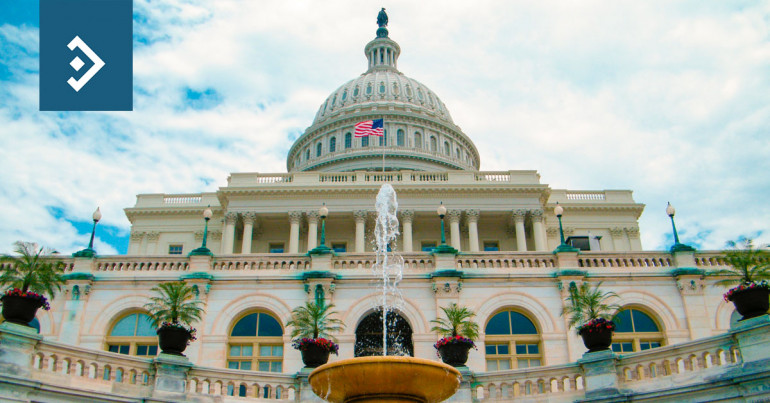
Trump trade threats push dollar lower
Morning mid-market rates – The majors
May 7th: Highlights
- US/China Agreement still some way off
- Sterling falls as hopes for a Brexit deal fade
- Euro lower on trade turmoil
US/China trade negotiations delayed by presidential posturing
China is one of the few countries on a par with the U.S. in its ability to stand up to threats of action. In the past when threats of higher tariffs have been made, the Chinese Government has simply bided its time, seen what action has been taken, and reciprocated with the appropriate level of response. If the U.S. carries out its current threat, it is almost certain China will continue on the same path.
In the end, all this does is delay the talks since it is perfectly clear that China will not be intimidated.
There is a clear financial element to the issue too since China holds $1.3 trillion of the total of $4.02 trillion of U.S. Government debt held by foreign countries. This debt is constantly being rolled over, but it wouldn’t take too strong a comment from Beijing about its continued willingness to endlessly roll over the debt to send global markets into freefall.
There is still plenty to come from the global trade situation but in the short term, the fall in risk appetite has provided a boost to the Japanese Yen, the traditional safe haven.
The dollar index in comparison, fell in reaction, reaching a low of 97.47 having opened at 97.56 and reaching a high of 97.70.
The U.S. data slate this week will concentrate on inflation with Producer Prices (expected to have risen by 2.5% YoY in April), on Thursday and Consumer Prices on Friday with a rise of 2.1% YoY unlikely to excite the Fed.
Considering your next transfer? Log in to compare live quotes today.
Sterling settles at a higher level despite no Brexit breakthrough
MPs have splintered into many factions that have ensured that the process has been elongated beyond what was either expected or planned for. The two major Parties, originally taking note of the demands of Brussels, have now allowed their talks to descend into a point scoring tussle with neither side able to focus on the issue at hand, the UK’s departure from the EU.
It seems that the bout of optimism that led to a rally in the value of the pound last week was yet another false dawn. It became clear over the weekend, that there is zero trust between the Conservative and Labour Parties over what they can reasonably expect a majority of MPs across the entire House to support.
The entire process has now been distilled down into three possibilities: 1) The UK leaves the EU under the withdrawal Agreement that is already in place. 2) The UK leaves with no deal. 3) The decision is taken away from Parliament and handed back to the public, this is the so-called people’s vote.
The opposition is making a very good case for abrogating their responsibility to their supporters by almost saying “we don’t have a Brexit plan, therefore, cannot support anyone’s, but we certainly want a General Election to be the outcome”.
It is not new news to hear Theresa May say that she won’t preside over another Queens Speech since the next State opening of Parliament will presumably only take place once either Brexit, a General Election or both have taken place.
The pound traded in a range between 1.3171 and 1.3080 versus the dollar yesterday as hope about a Brexit deal deflated like a burst balloon. It closed at 1.3097.
Single currency lower as trade issues prevail
That optimism was faded as President Trump reverted to social media to threaten China and the source of the economic positivity was snatched away.
It seems that the words of ECB President Draghi continue to ring in traders’ ears and until there is some agreement on international trade that allows the global economy to grow, the Eurozone will remain in the doldrums.
This begs the question: “why can’t the ECB act to stimulate domestic growth?” The simplistic answer is that it has no tools left to do such a thing. They have extremely low rates of interest and a high degree of accommodation, they have offered further liquidity to banks but still, no one is borrowing. Brexit clearly isn’t helping with uncertainty on the rise. The major concern is disruption to Germany’s supply chain from Brexit and how they will replace parts supplies from within the EU.
Last week, the Euro traded between 1.1265 and 1.1135, closing at 1.1201 and there was limited optimism. The previous week it traded between 1.1264 and 1.1110 and there was extreme pessimism. So, from that, we can conclude that the difference between a good week and a bad week is about 25 pips.
In much the same way as the pound will be directionless until Brexit is settled, a similar statement is true about the euro and global trade.
Have a great day!

About Alan Hill
Alan has been involved in the FX market for more than 25 years and brings a wealth of experience to his content. His knowledge has been gained while trading through some of the most volatile periods of recent history. His commentary relies on an understanding of past events and how they will affect future market performance.”



